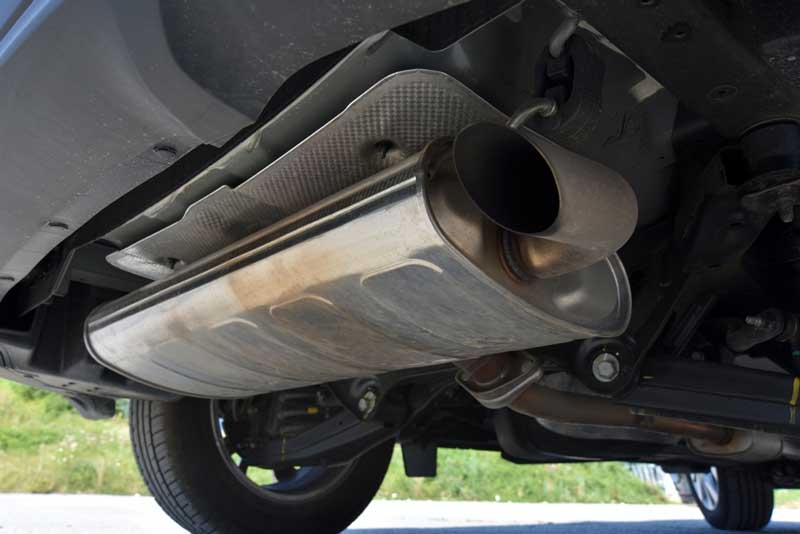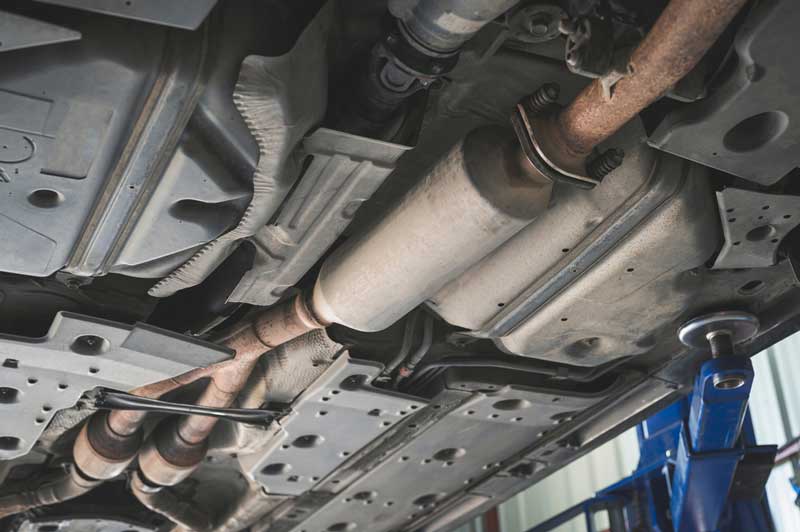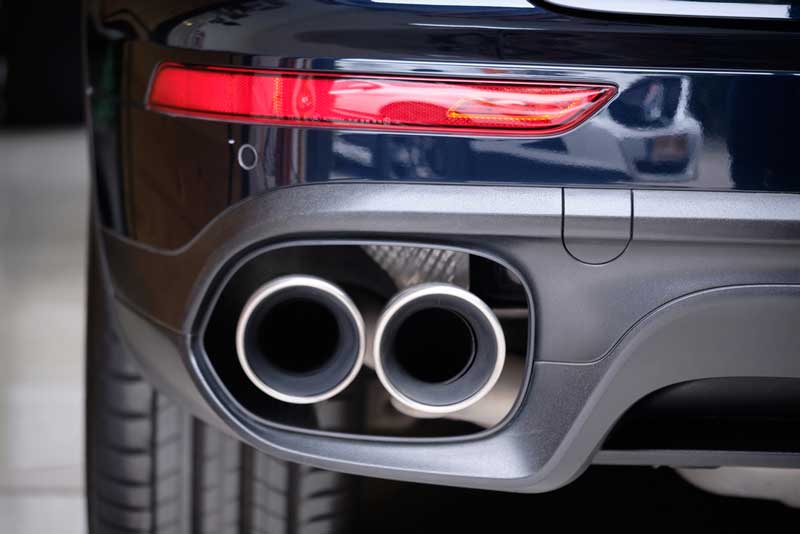There is no debate that if your car’s performance and speed have improved, you’ll want the sound to match the improvement. However, you may be faced with questions like, what is the difference between Muffler Delete and Resonator Delete? Which is the ideal?
If this is you, then you are in the right place. Get to increase the magnitude of your car’s sound, by using a resonator or muffler delete.
Both tools will ultimately have the same function. The sound produced by both of them is where the biggest distinction lies. Longer periods will be spent with the said resonator deletion while muffler deletion is more subdued.
This article would explain in detail what you need to learn about Muffler Delete and Resonator Delete, the distinctions that make them unique, their installation procedure, and more.
Let’s get started!
Muffler Delete and Resonator Delete: Which is Preferable?
The best way to increase your vehicle’s volume is by a muffler delete. This is because a resonator delete would change the sound of your car and not offer increased volume. If you wish to modify your exhaust, a muffler and resonator delete may be your consideration.
The main goal of exhaust modifications is usually to improve the sound. Both the muffler and the resonator have minimal effects on the car’s weight, but no discernible effects on the car’s fuel efficiency or horsepower. Regarding the labor costs involved in deleting them, they are likewise similarly priced.
Which is better, then? Muffler delete, in our opinion, is a much better choice than the resonator delete.
If you remove the muffler, which reduces the sound and also makes it more tranquil, the exhaust sound will become more obnoxious and louder. Inclusively, the resonator is likely to have a small impact on the volume. Still, its main function is to prevent obtrusive or intolerable noise from being produced, by the resonant frequencies.
Review your state’s driving laws, before purchasing your welding station and angle grinder. Do your study to prevent wasting time and money, because most areas restrict straight pipes or muffler deletes, and even make it unlawful to sell automobiles.
Also Read: Car Blowing White Smoke After Oil Change (Causes & Fix)
How do Muffler Delete and Resonator Delete Work?
Mufflers, a sizable cylinder close to the exhaust system’s termination are used to lessen engine noise.
A muffler’s resonator chambers, which are made up of space, perforations, and pipes used to bounce sound around and lessen its volume, are visible when the muffler is cut in half. As a result, mufflers reduce noise from the redline to the dormant RPM range. Additionally, they slightly lessen the hum, drone, and other annoying noises.
Resonators can be installed before, after, or on the two sides of the muffler. Their main objective is to change the engine’s noise output.
Resonators and mufflers serve opposite roles. Noise reduction should be in second place to volume reduction when using a muffler. A resonator’s main purpose is to change the sound; loudness reduction becomes less important.

You may have had awful experiences with a vacuum, an angle grinder, or a washing machine. The engine in your car also produces frequencies, several of which irritate human ears.
The exhaust system alone does a great deal, to shape and attenuate the sound that emanates from the engine, but the resonator’s role is to handle those critical frequencies, and reduce the drone or humming sounds.
The exhaust manifold, resonator, muffler, exhaust tip, and catalytic converter are all connected by pipes in a typical exhaust system. Two exhaust systems are present in engines with greater displacements, and six or additional cylinders, multiplying the number of mufflers and resonators.
Muffler Delete and Resonator Delete: Major Differences
1. Quality of Sound
The engine makes louder, more raw sounds because the muffler muffles the sound that travels through the RMP. So, if you have to eliminate one, a far better choice than the resonator is the muffler, in terms of sound improvement.
Otherwise, most especially when achieving optimal RPMs on the highway or idle roads, your trips become uncomfortable if you don’t.
2. Weight is Reduced
It’s challenging to predict how much weight will be saved by deleting any of the components, because matching the sound and powering of the engine, is what the exhaust system is designed to do.
The muffler can weigh up to 45 pounds on a 2016 Ford Mustang, but the resonator is only 25 pounds. Weight saving is minimal compared to the steel tubing weight which must replace the portion where the resonator or muffler was previously located.
The only appropriate approach to lighten the exhaust system is to switch to a high-performance, aftermarket straight pipe made of aluminum. Of course, if you want to reduce as much weight as you would like, it could be expensive, but it’s worth it.
3. Power is Boosted
Sometimes withdrawing the muffler will increase the power of the car. In addition, since it does not redirect exhaust gases, efficiency is increased because the back pressure is less.
We advise scheduling a dyno test when you intend to discover the magnitude of an increase. There is a 5–10 horsepower increase to be anticipated.
Most automobiles lose power when the resonator is removed. Some cars will get a tiny boost in horsepower, without anything remarkable. With that weight decrease, they typically do not gain more HP but less.
Additionally, you won’t feel much to no backpressure. If your exhaust flow is weak, it will decrease your car’s power.
4. Gas Mileage
The muffler removal does not affect whatsoever gas mileage. A muffler is a noise-canceling apparatus, that can lessen the strength of sound waves produced by combustion.
Though, if you had just removed a muffler and observed a difference in gas mileage, something else is probably to blame. A resonator removal would also decrease backpressure, and boost power and MPG.
In most automobiles, removing the resonator won’t significantly affect the gas mileage or torque.
5. A Tuning Is Required
Resonators don’t require maintenance or muffler removal. However, if, for instance, you altered any components that affect exhaust flow, some adjustment is required. So be ready for your car’s engine to emanate a lot of noise.
6. Cost of Removal
The resonator and the muffler inclusively will cost roughly the same to remove, because they require a comparable amount of effort and a pipe for a replacement around the same length. So although most stores charge around $100, you should anticipate paying between $50 and $300.
7. Legal Problems
Sadly, neither the removal of the muffler nor the resonator, has significant advantages in terms of fuel efficiency. So start exploring alternatives, if you want to figure out how to lower your car’s fuel usage.
Also Read: Throttle Position Sensor Symptoms (Causes & Solutions)
Installation Procedure for Muffler Delete and Resonator Delete
The installation process will change, depending on the motor you’re dealing with. You will need to cut into the exhaust pipe regardless of your device. Consequently, which mode of installation is simpler? To decide this for yourself, you can learn about both processes in the sections below.
Resonator Delete Installation
Resonator deletion installation is a little bit simpler. Making a mark on the pipe where the gadget will be installed, is the first step. The starting point should be about 5 inches from the resonator’s edge. Getting a straight cut is important. The exhaust sleeves must then be removed using a 15mm socket. You ought to be able to effortlessly extract the resonator at this point. The resonator should be kept supported, by a jack throughout this operation. You don’t intend it to fall and slam into your foot, anyway.
The resonator deletion installation can then be started. Simply slip it into position, then tighten the nuts. By using a power drill, you can simplify your life. You can now go outside and demonstrate your new sound.

Muffler Delete Installation
It will be a little trickier to install the muffler delete. After all, the muffler needs to be removed. In any case, the process is largely the same. It is preferable to jack the car up. Ensure the car is properly supported; otherwise, you risk losing your life. You must now start by taking the muffler off. Clamps will probably be used to hold the muffler in place.
You must take out those clamps. Next, you must cut the muffler from the exhaust pipe after they have been removed.
The exhaust and muffler must be separated when the cut has been completed, and the clamps removed. At this point, you ought to have the ability to completely remove the muffler. It might be necessary to make a few additional cuts through the pipes if they are rusty and incapable of being separated. The next step is to locate a muffler delete, that will suit your car. The pipes must line properly, and they must be the proper length.
It’s time to install the gadget at this point. Inserting the opening pipe into the exhaust pipe already in place. Make sure the proper clamps are used to secure the pipe. Muffler clamps ought to work in this situation. The hardware may be included with the muffler delete you bought. Depending on the circumstances, the pipes may need to be joined via welding. In any case, you ought to be done. It’s time to check out how your car sounds in the real world.
Also Read: Temporary Fix for Crankshaft Position Sensor (Expert Guide)
Frequently Asked Questions – Muffler Delete and Resonator Delete
Which is better, resonator or muffler?
Resonators modify the exhaust for a more pleasant sound, while mufflers lower the exhaust volume. Resonators can reduce a handful of the exhaust’s scratchy and loudly sharp noises, but they do not affect the volume.
Will resonator delete cause problems?
Since the resonator delete is a component of the exhaust system’s back end, taking it out occasionally affects how well your catalytic converter works. Also, due to the variations in backpressure that occur when that happens, you can occasionally cause your check engine light to illuminate, or a code to appear on your computer.
Does muffler delete add HP?
The increased torque and horsepower at high speeds are also difficult to overlook, giving the car a more muscular sound.
Will no muffler hurt my engine?
Your exhaust system’s performance may suffer due to a damaged muffler. The damaged component can prevent your automobile from effectively sucking exhaust fumes out of your engine, which will have a detrimental impact on the performance of your car’s engine.
Will resonator delete hurt an engine?
Your engine’s efficiency may also be affected by a resonator deletion. It can result in increased fuel consumption since it influences the back pressure of the exhaust gases.
Does a bad muffler affect gas mileage?
Your fuel efficiency significantly decreases; have your mechanic inspect your car if the muffler is loose or damaged. Whatever the reason, squandering fuel results in daily financial loss. Mileage can cause issues if you experience lower fuel levels.
Conclusion – Muffler Delete and Resonator Delete
The right exhaust modification will vary depending on the car, the local restrictions, and the driver’s objectives. However, it seems reasonable to prioritize the desired engine sound, since the performance gains provided by resonator and muffler deletes are probably marginal for some models.
A muffler delete is the greatest approach to improving your car’s volume. Although a resonator delete on its own won’t improve volume, it will alter your car’s sound. So, a resonator and muffler deletion might be the best course of action if you want to improve your exhaust.

